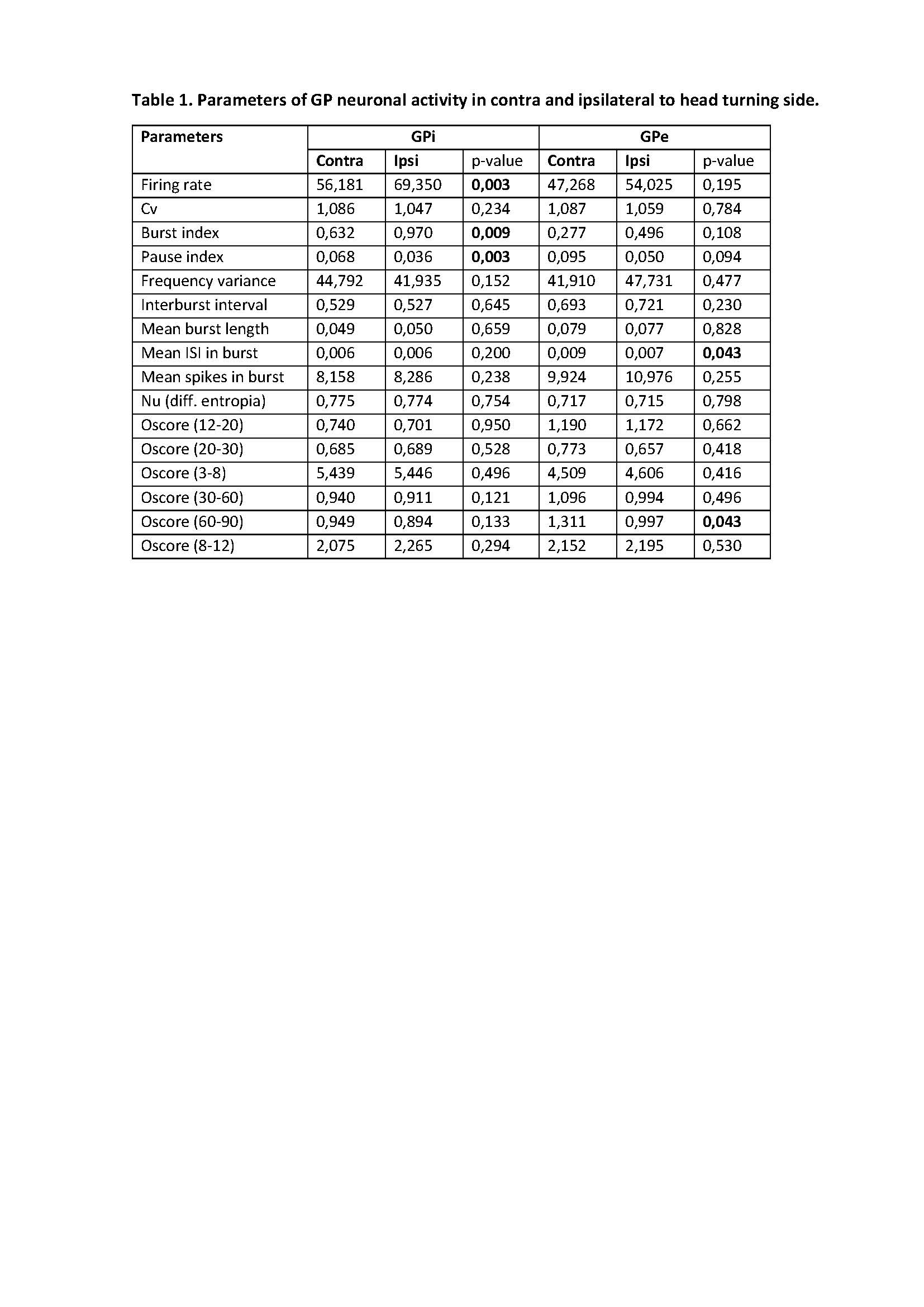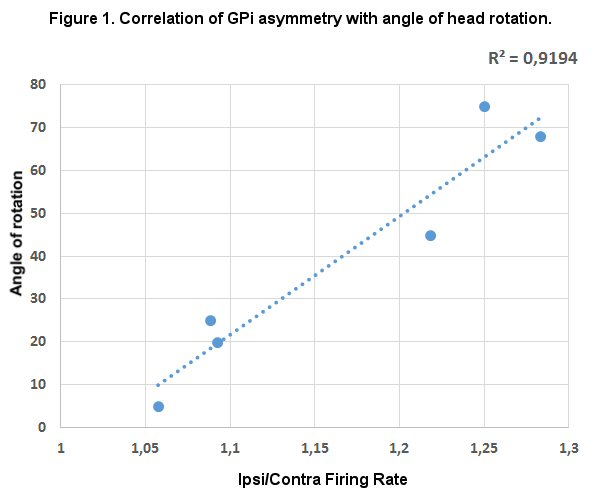Session Information
Date: Saturday, October 6, 2018
Session Title: Neurophysiology (Non-PD)
Session Time: 1:45pm-3:15pm
Location: Hall 3FG
Objective: To find correlation between single unit activity in globus pallidus (GP) and neck turning in patients with cervical dystonia (CD).
Background: Asymmetric GP local field potential (LFP) and single unit activity was described in CD [1,2]. It is however unclear whether such asymmetry is the cause or the consequence of CD.
Methods: We used intraoperative microelectrode recording (MER) and LFP to capture GP activity in 10 CD patients who elected treatment with deep brain stimulation surgery. After separating burst and tonic neurons using the burst index, we measured 25 objective spike train parameters in each cell types. We used analysis of variance (ANOVA) and F-score to determine which parameter is dependent upon the laterality of CD. Oscillation scores (OS) for each frequency band were computed with the spectral analysis of the single-unit activity as well as the LFP.
Results: Among 25 parameters, the spontaneous discharge rate of the burst and tonic neurons was significantly higher in GPi in the hemisphere ipsilateral to the side of head turning or tilt [Table 1]. In contrast, only tonic GPe cells had high discharge rate in the ipsilateral hemisphere. The GPi cells had prominent bursting characteristic on the side ipsilateral to the head turning. GPe burst parameters were symmetric. The LFP in gamma band was asymmetric in GPi, but not in GPe. There was a strong correlation between the degree of GPi asymmetry and angles of head rotation [Figure 1]. The asymmetry was most evident when torticollis and laterocollis were in the same direction. Patients with opposite torti- and laterocollis had no asymmetry.
Conclusions: Our data confirm the hypothesis that CD is associated with an asymmetric pallidal activity. We found strong correlation between the degree of head rotation and unit activity. Our results support the hypothesis that pallidal asymmetry in CD could results from the asymmetric neck pull, hence the imbalance in neck proprioceptive feedback.
References: 1. Moll, C. K., Galindo-Leon, E., Sharott, A., Gulberti, A., Buhmann, C., Koeppen, J. A., … & Gerloff, C. (2014). Asymmetric pallidal neuronal activity in patients with cervical dystonia. Frontiers in systems neuroscience, 8, 15. 2. Lee, J. R., & Kiss, Z. H. (2014). Interhemispheric difference of pallidal local field potential activity in cervical dystonia. J Neurol Neurosurg Psychiatry, 85(3), 306-310.
To cite this abstract in AMA style:
A. Sedov, U. Semenova, V. Myrov, S. Usova, A. Gamaleya, A. Tomskiy, H. Jinnah, A. Shaikh. Asymmetry of pallidal neuronal activity correlates with head rotation in patients with cervical dystonia [abstract]. Mov Disord. 2018; 33 (suppl 2). https://www.mdsabstracts.org/abstract/asymmetry-of-pallidal-neuronal-activity-correlates-with-head-rotation-in-patients-with-cervical-dystonia/. Accessed January 7, 2026.« Back to 2018 International Congress
MDS Abstracts - https://www.mdsabstracts.org/abstract/asymmetry-of-pallidal-neuronal-activity-correlates-with-head-rotation-in-patients-with-cervical-dystonia/


